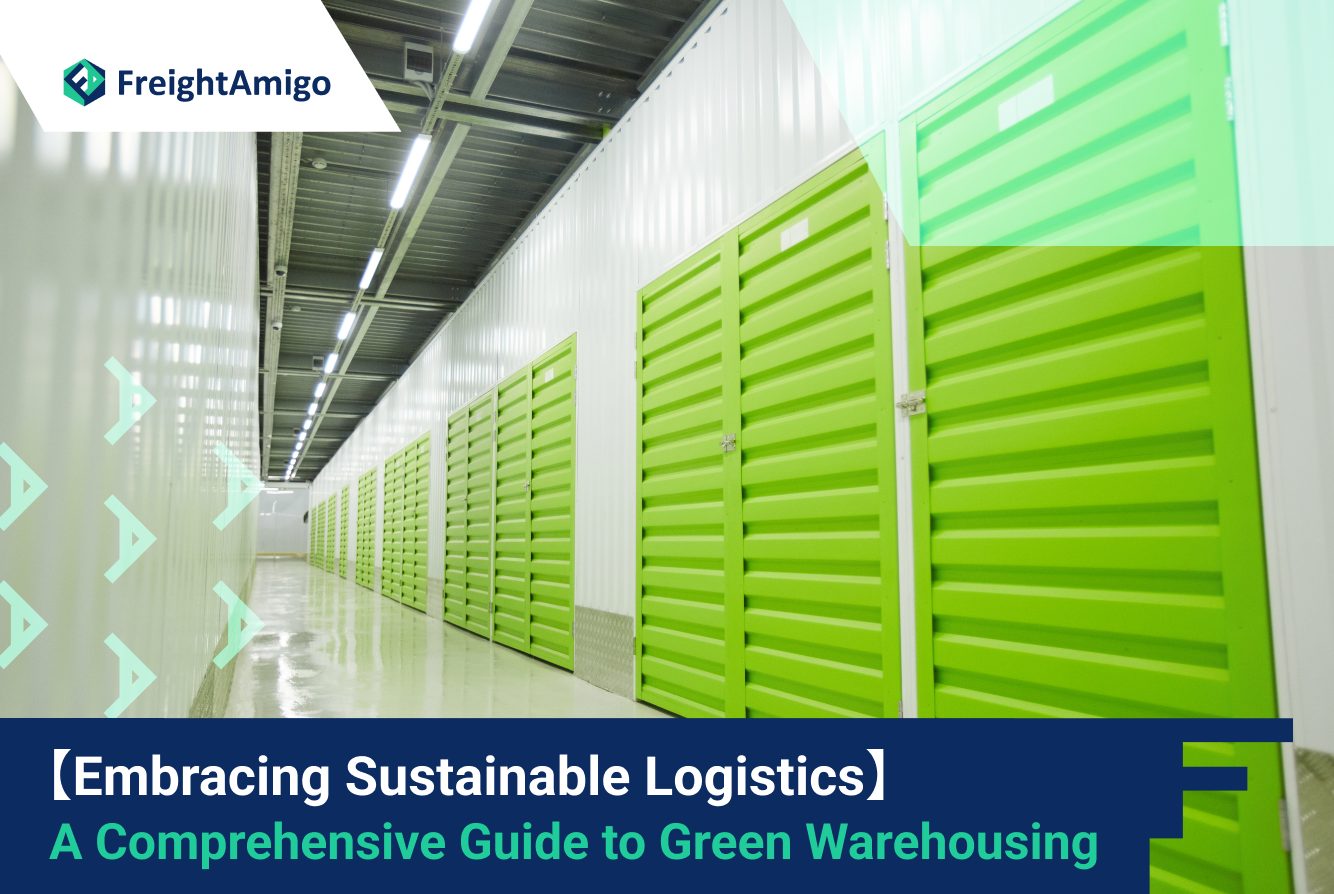Author Name: Tiffany Lee – Marketing Analyst at FreightAmigo
The role of sustainable logistics in today’s business environment cannot be overstated. With an increasing focus on environmental sustainability and cost efficiency, warehouses and distribution centers play a pivotal role in influencing the carbon footprint and operational expenses of a business. This article provides a comprehensive guide to implementing green logistics in warehousing operations, considering key strategies and innovative technologies.
Want To Compare The Best Express, Air Freight, Sea Freight, Rail Freight & Trucking Rates So As To Have Better Control On Cost?
The Significance of Sustainable Logistics in Warehousing Operations
Sustainable logistics, often referred to as “green logistics,” plays a vital role in modern warehousing and distribution operations. By focusing on energy-efficient practices, businesses can not only reduce their carbon emissions but also improve their financial performance. Here’s why sustainable logistics should be a top priority:
- Cost Efficiency: Implementing energy-efficient practices can significantly lower utility bills, allowing businesses to redirect those funds to other critical areas.
- Environmental Impact: By reducing energy consumption, warehouses and distribution centers can minimize greenhouse gas emissions and contribute to a greener future.
- Regulatory Compliance: Many governments and regulatory bodies now require companies to adhere to energy efficiency standards, making it crucial for businesses to meet these guidelines.
- Competitive Advantage: Demonstrating a commitment to sustainability can give businesses a competitive edge in the market, attracting environmentally-conscious partners and customers.
Implementing Energy-Efficient Strategies
1.Investing in Energy-Efficient Lighting
Lighting accounts for a significant portion of energy consumption in warehouses and distribution centers. By transitioning to energy-efficient LED lighting, businesses can achieve substantial energy savings. LED lights consume less electricity, have a longer lifespan, and provide better quality illumination compared to traditional lighting options. This not only reduces energy costs but also decreases maintenance expenses.
2.Optimizing HVAC Systems
Heating, Ventilation, and Air Conditioning (HVAC) systems play a critical role in maintaining suitable temperature and humidity levels in warehouses and distribution centers. By optimizing these systems, businesses can minimize energy wastage. Regular maintenance, proper insulation, and temperature monitoring tools can help identify inefficiencies and make adjustments to maximize energy savings.
3.Implementing Smart Energy Management Systems
Smart energy management systems offer advanced energy monitoring and control capabilities, allowing businesses to optimize energy consumption. These systems utilize sensors, analytics, and automation to track energy usage patterns and identify opportunities for improvement. By having real-time data and automated controls, warehouses and distribution centers can ensure that energy is used efficiently at all times.
Embracing Renewable Energy Sources
To further enhance sustainability, warehouses can consider investing in renewable energy sources. Some key options include:
- Solar Energy: Installing solar panels on warehouse roofs to generate clean and renewable electricity.
- Wind Energy: Exploring wind power options in locations with favorable wind conditions.
- Geothermal Energy: Utilizing geothermal heating and cooling systems to reduce reliance on traditional energy sources.
By generating their own renewable energy, warehouses can significantly reduce their carbon footprint and reliance on traditional energy grids.
Incorporating Innovative Technologies
Technological advancements are revolutionizing the way warehouses operate. The following technologies prove instrumental in sustainable logistics:
1.Energy Monitoring and Management Systems
Monitoring energy consumption in real-time enables warehouses to identify inefficiencies and take proactive measures. Data-driven insights enable warehouses to track energy usage, identify peak demand periods, and implement strategies to reduce consumption. Analyzing historical data helps warehouses make informed decisions regarding energy-efficient equipment, lighting, and HVAC upgrades.
2.Warehouse Automation
Automating warehouse operations not only improves overall efficiency but also contributes to energy optimization. Automated systems reduce energy consumption by optimizing processes such as inventory management, order fulfillment, and material handling. Adopting automated guided vehicles (AGVs) or robotic systems reduces energy wastage by minimizing human involvement in repetitive tasks.
Building Green Infrastructure
Building sustainable infrastructure and minimizing carbon emissions is critical to creating financially viable and environmentally responsible businesses. This involves reimagining the way warehouses and distribution centers operate. From initial design to day-to-day maintenance, using innovative strategies to improve energy efficiency has a significant impact on both the environment and your bottom line.
1.Optimize Design
An efficiently designed site layout improves space utilization and significantly reduces your construction footprint and the associated energy costs. To achieve this, savvy facilities managers are adopting cutting-edge technologies like automated storage and retrieval systems (ASRS) that reclaim unused vertical space and minimize the distance traveled between operational actions.
2.Add Analytics
A smart energy management system is the key to achieving next-level energy reduction goals. Intelligent analytics is the heart of that system. An intelligent analytics platform continuously monitors building data and makes real-time adjustments to improve efficiency.
3.Enhance Maintenance
One of the most valuable benefits of adding analytics is the impact on building maintenance. Advanced analytics software uses historical and current data patterns to not only detect and diagnose faults but also makes reliable predictions about future performance.
Conclusion
Embracing sustainable logistics and investing in innovative technologies are key steps towards a more energy-efficient future. Implementing energy-efficient strategies like investing in LED lighting, optimizing HVAC systems, and utilizing smart energy management systems, businesses can achieve substantial savings and create a more sustainable future. By prioritizing energy efficiency, businesses can not only lower operational costs but also contribute to a greener world. Implementing sustainable logistics is a win-win situation for businesses and the environment.
There Are Different Options For Cargo Transportation. If You Want To Choose The Most Convenient And Suitable Solution, It Is Best To Have The Full Support Of Logistics Experts! If You Are Planning To Ship Goods Overseas, Please Go To The FreightAmigo Page For Inquiries.
===
Read More:
【Export of USA】 A Gateway to Success and Global Economic Influence
The Key Trade Partners of the USA: Boosting International Commerce
【Export of USA】 US-China Trade War’s Influence on USA’s Export Industry
===
If you have any inquiries on logistics/supply chain, feel free to contact FreightAmigo now:
Chat with us online OR
Phone : +852 28121686
WhatsApp: +852 27467829









































